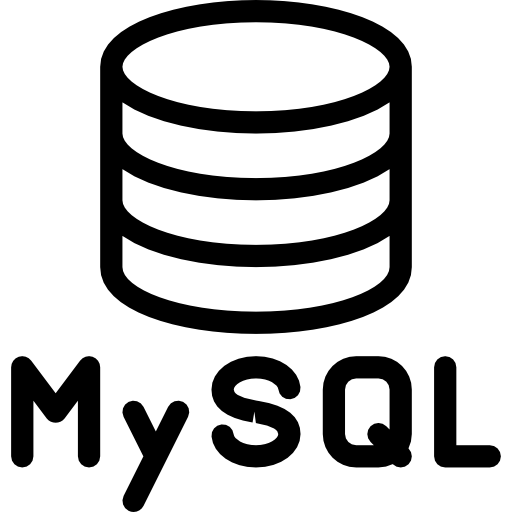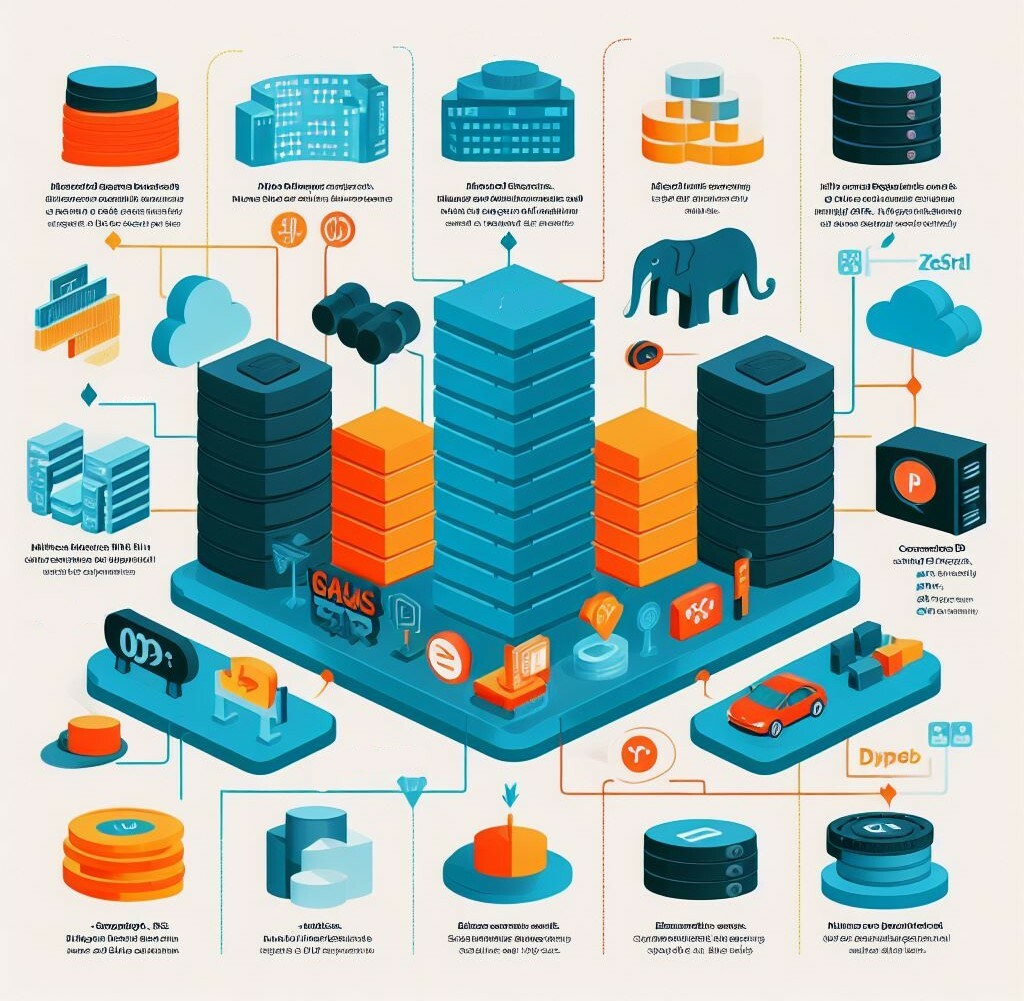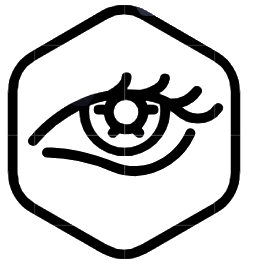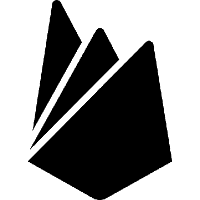Comparing Top Database Management Systems: Key Differences, Pros and Cons Choosing the right database management system (DBMS) is a pivotal decision when developing a software application. With the multitude of options available, it can be daunting finding the ideal database for your specific needs.
In this article, we’ll compare the key characteristics of the 10 most popular DBMS solutions - both relational (SQL) and non-relational (NoSQL): MySQL, PostgreSQL, Microsoft SQL Server, MongoDB, Redis, Apache Cassandra, Elasticsearch, SQLite, Amazon DynamoDB and Google Cloud Firestore. We'll analyze the prime advantages and disadvantages of each database, along with suitable use cases. With this comprehensive DBMS comparison guide, you'll gain the knowledge to select the best database for your next project.
Relational vs Non-Relational Databases
Before we delve into individual systems, let's outline the fundamental disparities between SQL and NoSQL databases: Relational databases adopt a structured approach, organizing data into tables governed by predefined schemas. These tables are composed of rows (records) and columns (attributes), ensuring a strict and orderly storage method.
In contrast, non-relational databases leverage adaptable data models such as documents, key-values, graphs, and column-family structures. This flexibility allows them to effectively manage unstructured data, adapting to diverse formats and content types. SQL databases showcase their strength in handling intricate queries, ensuring transactional consistency, and maintaining stable data structures. On the other hand, NoSQL databases prioritize scalability and expedited access to extensive datasets, excelling in handling large volumes of information with efficiency.
RELATIONAL VS NON-RELATIONAL DATABASES

Now let's explore the top options in each category!

MySQL is a popular open-source relational database that uses SQL. It is a relational database management system that is easy to implement and has wide language and platform support. MySQL is commonly used for small web apps and ecommerce stores.
Pros:
- Free and easy to implement
- Allows basic scaling through sharding
- Wide language and platform support
Cons:
- Limited scaling capabilities
- Partial open-source functionality
- Not fully SQL standards compliant
Use Cases:
- Small web apps and ecommerce stores
- Basic analytics and business intelligence
PostgreSQL is an advanced relational database capable of handling complex workloads efficiently. It is an object-relational database system that is highly extensible and customizable for developers' needs. PostgreSQL excels at applications requiring high concurrency and custom data types.
Pros:
- Highly extensible and customizable
- Excellent concurrency and scalability
- Strong data integrity and reliability
Cons:
- Steeper learning curve than MySQL
- Not ideal for large-scale distributed systems
Use Cases:
- Applications requiring high concurrency
- Data analysis and business intelligence
- Applications needing custom data types
Microsoft SQL Server is an enterprise-grade commercial database optimized for Windows environments and .NET-based apps. It is a relational database management system that offers robust tools for analytics, reporting and business intelligence. SQL Server integrates deeply across Microsoft products and services.
Pros:
- Broad feature set for transactional systems
- Integrates tightly with Microsoft products
- Enterprise-level performance and security
Cons:
- Expensive licensing model
- Primarily designed for Windows platforms
- Strong vendor lock-in
Use Cases:
- Windows-based business applications
- ETL, data warehousing and analytics
- Companies invested in Microsoft ecosystem


MongoDB is a document-based NoSQL database designed for high scalability and flexible schemas. It is a document-oriented database program that uses JSON-like documents for storing unstructured or semi-structured data. MongoDB is popular for modern applications in need of horizontal scaling and replication.
Pros:
- Flexible schema and JSON-like documents
- Easy horizontal scaling and replication
- Fast query response times
Cons:
- No declarative query language like SQL
- Immature transaction support
- Higher memory usage due to denormalization
Use Cases:
- Content management and delivery systems
- Real-time analytics and IoT data
- Applications needing flexible data models
Redis is an in-memory NoSQL database suitable for caching, messaging and real-time use cases needing millisecond response times. It's an open-source, in-memory key-value data store that supports data structures like strings, hashes, lists and sets. Redis delivers extremely fast throughput and operations.
Pros:
- Extremely fast operations and throughput
- Useful both as database and cache
- Supports replication and transactions
Cons:
- Data loses persistence if Redis server stops
- Limited data structures compared to other NoSQL databases
- Not ideal for complex queries
Use Cases:
- Caching frequently used data
- Real-time analytics and streaming
- Leaderboards, rankings and counting
Apache Cassandra is a distributed NoSQL database built for scalability and high availability across data centers. It's a wide column store NoSQL database designed for high scalability and high availability without compromising performance. Cassandra handles high volume transactional systems and time-series data.
Pros:
- Massively scalable across multiple nodes
- High availability with no single point-of-failure
- Tunable consistency levels
Cons:
- Complex data model compared to other NoSQL databases
- Operational complexity to manage clusters
- Mostly limited to one data center
Use Cases:
- High volume transactional systems
- Time series and IoT data
- Applications needing scalability and uptime
Elasticsearch is a real-time search and analytics engine that enables full-text search and aggregations. It's a distributed RESTful search and analytics engine built on Apache Lucene. Elasticsearch powers log analysis, business intelligence and data visualizations.
Pros:
- Full-featured search engine
- Real-time analytics and aggregations
- REST APIs and scalable clusters
Cons:
- Steep learning curve
- Not ideal as primary data store
- Advanced security features not free
Use Cases:
- Full text search and real-time analytics
- Log analysis and business intelligence
- Applications using JSON documents

SQLite is a self-contained, serverless relational database suitable for embedded and local use cases. It's a compact relational database management system contained in a C library. SQLite works well for prototyping, testing and mobile applications.
Pros:
- Lightweight and requires minimal setup
- Cross-platform and highly portable
- Excellent for small local databases
Cons:
- Not built for high concurrency
- Lack of user management or access control
- Limited to smaller data volumes
Use Cases:
- Mobile applications and embedded devices
- Local data storage for desktop apps
- Prototyping and testing of ideas
Amazon DynamoDB is a fully managed NoSQL database service with seamless scaling and high availability. It's a key-value and document database that provides seamless scaling and high availability. DynamoDB simplifies development and operations of distributed cloud systems.
Pros:
- Seamless scaling and high availability
- Microsecond latency for any scale
- Fully managed with no ops overhead
Cons:
- Higher cost than self-managed NoSQL databases
- Complex pricing model
- Query functionality not as rich
Use Cases:
- Serverless applications on AWS
- High-traffic web and mobile apps
- Distributed systems across regions
Google Cloud Firestore is a serverless NoSQL database focused on automatic scaling and real-time data syncing. It's a flexible, scalable NoSQL database that has native integration with Google Cloud products and services. Firestore fits well with mobile, web and IoT applications.
Pros:
- Designed for automatic scaling
- Real-time data synchronization
- Integrated with Google Cloud products
Cons:
- Limited to GCP ecosystem
- No complex transactions or filtering
- Data migration requires downtime
Use Cases:
- Mobile, web and IoT applications
- Real-time collaboration and syncing
- Serverless apps using Google Cloud
Key Considerations for DBMS Selection
Besides the options detailed in the post, numerous other database management systems exist, each with its own strengths and weaknesses. While we've only touched on a fraction of available databases, our focus was on comparing those commonly utilized in both small-scale web applications and large-scale data warehousing systems. The question remains: How do you go about selecting the most suitable one for your specific software application? Some key factors to weigh when choosing a DBMS include:
- Scalability needs - SQL or NoSQL?
- Data models required - relational vs. document vs. graph etc.
- Complexity of queries and transactions
- Performance and latency requirements
- Development skills and experience available
- Budget and licensing costs
- Platforms, languages and frameworks in use
Of course, requirements vary hugely between projects. Conduct thorough planning, prototyping and load testing when evaluating DBMS options. With clear criteria defined, you can confidently select the ideal database for your application's needs.





